How many of your shoppers believe getting omega-3s is a one-way street to fish and marine oils? Sure, these are great sources of DHA and EPA, but consumers might be missing out if they think of plant-based omega supplements as the alternate route. Rather, these vegetarian supplements can be an important highway to nutrition, equal to their ocean-derived counterparts.
Bringing Shoppers Up to Speed About Plant-Based Omegas
While marine DHA/EPA is an excellent supplement choice, some shoppers may prefer plant-based omegas or want to use them in conjunction with marine oils. “The fact that customers may automatically go to fish for their daily omegas is an indication of the basic misleading or misunderstanding that currently exists in the marketplace,” says Alberto Trujillo, national education manager for Flora, Inc., Lynden, WA. So, what can retailers do to raise the profile of vegetarian sources in their stores?
Promote, promote, promote, experts say. And, the perfect place for such marketing may be in cyberspace using Facebook and Twitter as tools. Says Dean Mosca, president of Proprietary Nutritionals Inc., Kearny, NJ, “Tweet or post the latest research on chia-derived EFAs and remind consumers that plant-based EFAs are an equally effective alternative choice to obtain EFA benefit.”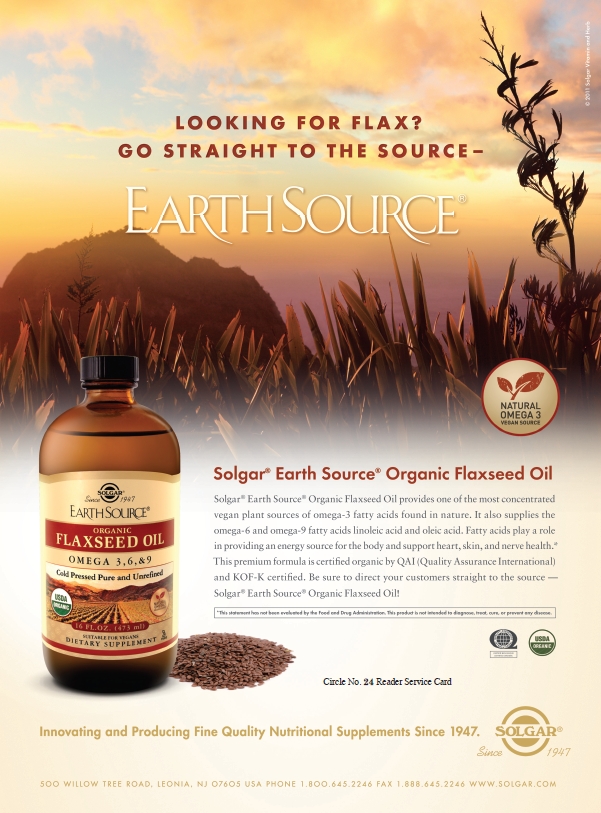
Mosca says stores can zero in on certain clients that may be especially drawn to plant-derived omegas: “vegetarians, vegans and those who simply are repelled by anything ‘fishy,’” he says.
Others who may be especially receptive to the idea of plant-derived omegas include those concerned about environmental factors. Though most fish oil manufacturers in this industry sustainably source their supplements, some folks are still concerned about maintaining fish populations. While not everyone feels their apprehension is warranted, “there is growing fear that environmental damage might result from over-consumption,” according to Bill Chioffi, national education director of Gaia Herbs, Brevard, NC.
If this issue is important to your shoppers, tell them about sustainable plant sources. For instance, Chioffi says, “Chia is a renewable resource that does not threaten species population and is a nutritious source of vitamins and minerals. Also, chia has no mercury accumulation issues like fish and is a safer vegetarian option for adding omega-3 fatty acids to your diet.”
Chioffi believes some individuals (like pregnant or nursing women) are concerned about the mercury content of fish oil. He states, “The U.S. Department of Health and Human Services along with the U.S. Environmental Protection Agency has issued a warning that, ‘Some fish and shellfish contain higher levels of mercury that may harm an unborn baby or young child’s developing nervous system.’” Many fish oils in this industry are purified to the point that only trace, insignificant amounts are found. Still, some people don’t want to take any chance at all that heavy metals like mercury are present in their supplements. Thus, plant-based omegas may be a good match for this clientele.
Even with these more plant-ready shoppers, retailers may have to answer questions about whether plant-based omegas are as good as fish or krill oil. For these folks, Mosca recommends scheduling a well-promoted seminar that discusses “how the research is just as compelling showing demonstrative benefit.”
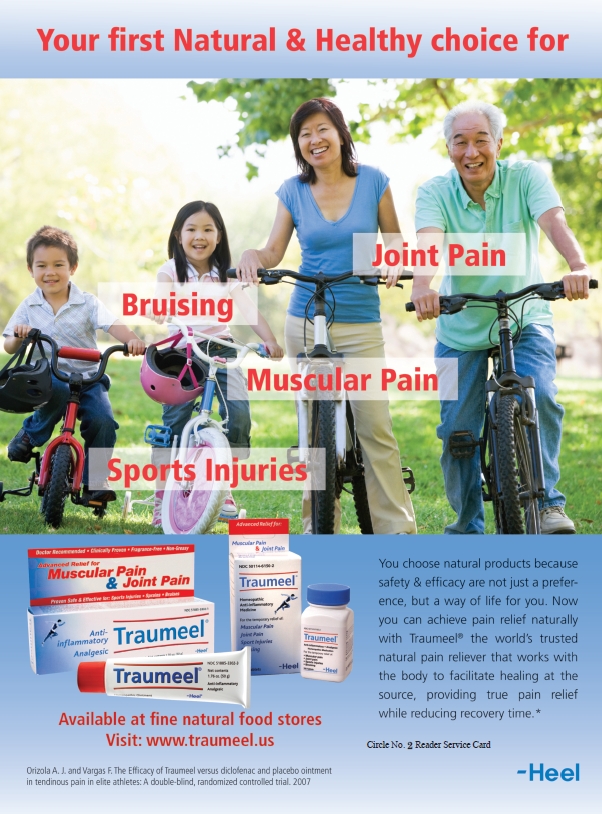 But don’t wait for an event to show off the taste of plant-derived omegas. Shoppers are often eager to try something new, and you’ll have the chance to explain how some omega oils can double as culinary ingredients. Speaking of hemp oil, Mike Fata, CEO and co-founder of Manitoba Harvest, Winnipeg, Manitoba, Canada, says stores can showcase “rich, gourmet taste and versatility through incorporating hemp oil into the deli section or other made-in-store products.”
But don’t wait for an event to show off the taste of plant-derived omegas. Shoppers are often eager to try something new, and you’ll have the chance to explain how some omega oils can double as culinary ingredients. Speaking of hemp oil, Mike Fata, CEO and co-founder of Manitoba Harvest, Winnipeg, Manitoba, Canada, says stores can showcase “rich, gourmet taste and versatility through incorporating hemp oil into the deli section or other made-in-store products.”
In the supplement aisles, arm your sales team with facts about omegas-3/-6/-9 and be sure they are well versed in all the health benefits that plant-based omegas have to offer. You can also place marine- and plant-based omegas in the same sections so shoppers can see all your EFAs offerings at once. States Andrea Martin, manager of brand public relations at Martek (a division of DSM Nutritional Products), Columbia, MD, “Education is key as consumers may not be aware that a vegetarian and sustainable source of DHA and EPA is available. By communicating the benefits of vegetarian sources of DHA and EPA to their customers, retailers can help raise the profile of fish-free sources.”
Many ingredient suppliers and finished product manufacturers can supply you with facts you can use to make informative shelf talkers, customer handouts and newsletter articles. For instance, Andreas Koch, marketing director for Barlean’s, Ferndale, WA, says his company offers a free fish–flax EPA/DHA conversion chart. “This one-page is an easy explanation showing that a daily dosage of ALA from flaxseed oil is automatically converted by your body into a sufficient daily amount of EPA/DHA,” he states. Other ideas from Koch for in-store literature include:
• Post a cost comparison in conjunction with the conversion chart showing that vegetarian oils like flaxseed oil are less expensive supplements.
• Print “Did You Know?” one-page sheets as bag-stuffers explaining the omega-3 in vegetarian oils.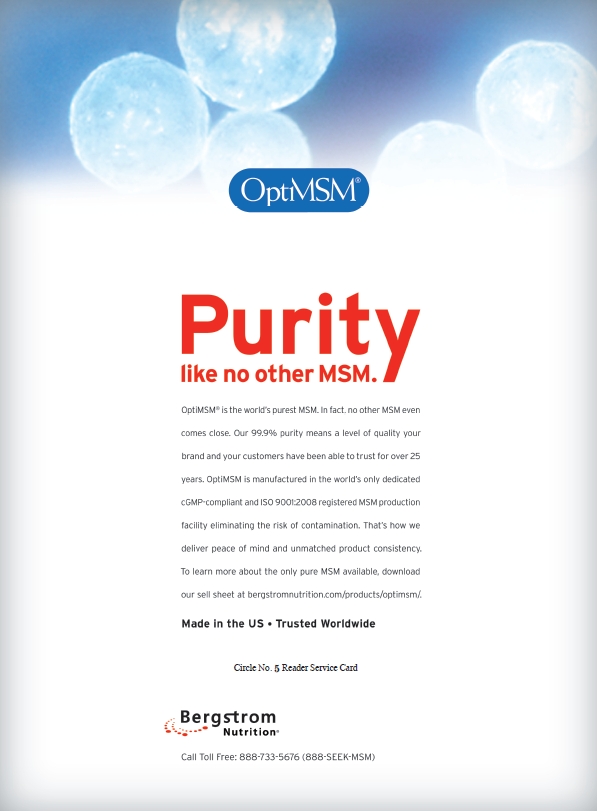
• Place in-store shelf talkers in front of products like flaxseed oil that say, “Comparable Omega-3s to Fish Oil!”
Again, industry manufacturers and suppliers can be a main source of information about plant omega facts. They can help clarify any misconceptions about these supplements and can tell you about the most important benefits of these products. The following is a compilation of such information offered by interviewees for this article.
The Road to Nutrients
An important characteristic of plant-based EFAs is that they are loaded with beneficial nutrients above and beyond their omegas. This makes them beneficial for many aspects of wellness like heart health, blood sugar support and more.
Omegas combos. First off, many plant-based supplements offer a blend of important omegas that cannot be found in marine oils. Trujillo believes that because vegetarian omegas offer alpha linolenic acid (ALA) and linoleic acid (LA), “they are considered far more complete fatty acid products for overall health.”
A combination of these omegas may well appeal to shoppers. Take flaxseed oil, for instance. This nutritious supplement offers omegas-3, -6 and -9. Regarding the latter, Herb Joiner-Bey, N.D., scientific advisor to Barlean’s, notes that flaxseed is a source of oleic acid, a key to Mediterranean diet fame. This monounsaturated (also found in olives and olive oil) is well-known to support cardiovascular health. States Joiner-Bey, “Oleic acid helps to protect LDL-cholesterol from oxidation and protects the inner lining of arteries from damage that can lead to atherosclerosis.”
According to Trisha Sugarek, B.S., M.S., national educator and R&D specialist for Bluebonnet Nutrition Corporation, Sugar Land, TX, the main face behind the omega-3 content in flax is ALA, which can be converted to EPA and DHA in the body. It should be noted that this conversion varies by the individual.
 Marci Clow, M.S., R.D., senior director of product research for Rainbow Light Nutritional Systems, Santa Cruz, CA offers some informtion about this conversion: “Supplementation with flaxseed oil or alpha-linolenic acid increases the ratio of EPA and DHA to the pro-inflammatory arachidonic acid (1, 2). Alpha-linolenic acid has also been reported to suppress the production of interleukin-1 (IL-1), tumor necrosis factor (TNF), leukotriene B4, and oxygen free radicals by polymorphonuclear (PMN) leukocytes and monocytes (3).”
Marci Clow, M.S., R.D., senior director of product research for Rainbow Light Nutritional Systems, Santa Cruz, CA offers some informtion about this conversion: “Supplementation with flaxseed oil or alpha-linolenic acid increases the ratio of EPA and DHA to the pro-inflammatory arachidonic acid (1, 2). Alpha-linolenic acid has also been reported to suppress the production of interleukin-1 (IL-1), tumor necrosis factor (TNF), leukotriene B4, and oxygen free radicals by polymorphonuclear (PMN) leukocytes and monocytes (3).”
The ALA–EPA conversion is important, says Sugarek, because EPA is used to make prostaglandins. These hormone-like substances, she says, affect blood pressure, heart rate and immune responses. Plus, they “possess anti-inflammatory activities and promote healthy cellular membranes,” according to Sugarek. Decreased inflammation can benefit many areas of the body like the joints and skin. In fact, groups like the American Heart Association recommend having ALA (also found in canola, soy, perilla and walnut oils) in the diet for optimal heart health.
Trujillo feels LA and ALA from plants (100 g/day) should be our primary sources of dietary fats. Once this base is achieved, he believes supplemental EPA, DHA and gamma-linolenic acid (GLA) can help fill in the nutritional gaps of those looking for a specific therapeutic benefit like inflammation support, brain health or eye health. EPA, DHA, GLA, LA and ALA each play a unique role in supporting optimal wellness and cannot replace each other.
Let’s u-turn back to GLA briefly. Found in sources like evening primerose, blackcurrant and borage oil, this omega-6 derivative also benefits heart health by “regulating inflammation and LDL peroxidation, and furthermore, by promoting a lower level of fat in the blood will promote a reduction in blood pressure,” Sugarek states. It is beneficial for PMS, rheumatoid arthritis and allergic eczema, according to Joiner-Bey. GLA produces the prostaglandin PGE-1 and stops inflammation by “knocking out” proinflammatory COX-2, Sugarek says.
And, one cannot forget that DHA and EPA are also found in some vegetarian algal sources. Of course, DHA is well known to support brain and eye health. Sugarek reminds us how: “DHA mediates the transport of choline, a neurotransmitter, and amino acids in the brain for optimal cognitive health, mood and enhances the response of rhodopsin (pigment that allows for night vision), which is contained in the rod cells of the eye for optimal visual health.” DHA also supports cell membrane fluidity.
The benefits of such algal DHA, Sugarek notes, is that “because it is not from fish, there is no risk of ocean-borne pollutants.”
And, of course, EPA is well-known to support healthy cholesterol levels.
Before leaving the topic of omegas, one should note that some manufacturers’ proprietary blends of vegetarian omegas also offer a variety of EFAs. For instance, Udo’s oil combines GLA from evening primrose, DHA from algae and more. And Bluebonnet’s Trifecta formula blends flaxseed, evening primrose and borage oils. 
Talking about plant-based omegas with shoppers may also open the door to discussing a proper balance of healthy fats in one’s diet. According to Sugarek, 33% of most Americans’ daily calories comes from fat. While this amount is within the realm of healthy, as defined by the dietary recommended intake committee, she states that 25% of the population consumes 35% or more of its total calories from fat. And unforunately, we’re not talking about healthy fats. Many Americans choose a diet that is 10:1 to 20:1 omega-3 to pro-inflammatory omega-6 (like arachidonic acid). These ratios may be an underlying cause of the inflammation that affects the heart, joints and skin, says Sugarek. “Typically, the American on-the-go diet is high in saturated and trans-fatty acids from hamburgers, desserts and French-fried potatoes,” she says. “Over time, the consumption of foods that are rich in saturated and trans-fatty acids has been found to promote health risks associated with the heart.” She feels supporting heart health (from a plant-based healthy fats standpoint) starts with getting the right omegas: multiple mono- and polyunsaturated fatty acids, like those found in the Mediterranean diet.
“If people don’t replace the quality of the majority (100 g) of dietary fats with healthy foundational fats such as mono- and polyunsaturated omega-3 ALA and omega-6 LA and they continue to consume poor-quality fats as the majority of their 100 g of fat a day, then given the statistical percentages they will probably still die of heart disease even if they take the therapeutic fatty acids because the therapeutic omegas represent such a small percentage of daily fat intake,” warns Trujillo. He makes the point that while EPA supports healthy blood pressure levels, addressing the cause of high blood pressure through diet is of paramount importance.
Lignans. Some plant-derived omegas (like flaxseed, pumpkin seeds and sunflower seeds) also are rich in lignans, chemicals found in plants. Lignans have antioxidant properties and are believed to have an effect on human hormones. Lignans have been studied for their role in benefiting those with breast and prostate cancers and other health conditions. Says Clow, “The lignan constituents of flaxseed (not flaxseed oil) possess in vitro antioxidant and possible estrogen receptor agonist/antagonist properties, prompting theories of efficacy for the treatment of breast cancer. However, there is not sufficient human evidence to make a strong recommendation.”
Lignans are also said to benefit heart, immune and brain health.
Vitamins, minerals and protein. Last, if you’re getting your omegas from chia, flax or another plant, chances are you’re also stocking up on numerous vitamins and minerals. For instance, flaxseed is rich in vitamin E, magnesium, potassium, B vitamins, protein and zinc.
Chia, too, is chock full of nutrients. According to Dean Mosca, president of Proprietary Nutritionals Inc., Kearny, NJ, a 22-gram serving of this supergrain delivers 3.8 grams of omega-3 fatty acid, 3.4 grams of complete protein, 8 grams of dietary fiber, 139 milligrams of calcium, 0.5 milligrams of copper and 86 milligrams of magnesium.
Additional benefits of Salvia hispanica L, according to Agora Food Sciences (supplier of Chaveka), is that it is rich in antioxidants, vitamins B1/B2/B3, minerals like phosphorus, potassium, iron and zinc. The nutritional profile thus helps support healthy levels of inflammation and its soluble fiber content supports healthy cholesterol.
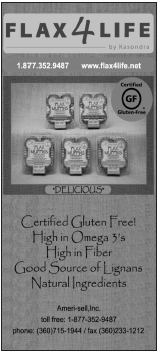 One can’t ignore hemp’s contributions to broad-based nutrition. This grain, says Mike Fata, CEO and co-founder of Manitoba Harvest, Winnipeg, Manitoba, Canada, offers soluble/insoluble fiber, easy-to-digest protein and all essential amino acids. Plus, there are “calcium, iron, magnesium, phosphorus and zinc—which is often hard to find in vegetarian diets.” Other notable components include antioxidants (like alpha-, beta-, gamma-, and delta-tocopherol and alpha-tocotrienol). States Fata, “Most notable is vitamin E, which is found at higher levels in hemp oil than other oils.”
One can’t ignore hemp’s contributions to broad-based nutrition. This grain, says Mike Fata, CEO and co-founder of Manitoba Harvest, Winnipeg, Manitoba, Canada, offers soluble/insoluble fiber, easy-to-digest protein and all essential amino acids. Plus, there are “calcium, iron, magnesium, phosphorus and zinc—which is often hard to find in vegetarian diets.” Other notable components include antioxidants (like alpha-, beta-, gamma-, and delta-tocopherol and alpha-tocotrienol). States Fata, “Most notable is vitamin E, which is found at higher levels in hemp oil than other oils.”
Wellness in the Fast Lane
Heart health. Like marine-derived DHA/EPA, plant-derived omegas boast an impressive resume of research support, according to Joiner-Bey. For heart health, he says, for instance, ALA (such as that in flaxseed oil) helps maintain:
• heart rhythm,
• blood pressure,
• blood lipids,
• clotting,
• arterial health.
Fata raises the point that GLA also is key for heart health. This omega-6 fatty acid is found in hemp, evening primrose oil, borage oil, blackcurrant seed oil and others. While some omega-6s (like linoleic acid [LA] and arachidonic acid) promote inflammation, GLA does the opposite (4). When taken as a supplement, it is converted to DGLA, which fights inflammation.
This is an important distinction to make because we often hear that the omega-3/omega-6 ratio is out of whack in most Americans’ diets. “The typical American diet tends to contain 14–25 times more omega-6 fatty acids than omega-3 fatty acids,” according to some estimates (4). Some people mistakenly assume that all omega-6s are off limits. But in actuality, one must consider the type of omega-6. States Fata, “GLA has been shown to have lipid-modifying effects such as reducing blood triglyceride levels. This is useful in the fight against heart disease.”
ALA, too, has research support for its use for cardiovascular care. A 2010 study from Iowa State  University’s Nutrition and Wellness Research Center (NWRC) suggests flaxseed lowered cholesterol levels without the use of drugs. The data suggested that eating 150 mg or more of flaxseed lignans daily decreased cholesterol in men with high cholesterol by nearly 10% over three months (5).
University’s Nutrition and Wellness Research Center (NWRC) suggests flaxseed lowered cholesterol levels without the use of drugs. The data suggested that eating 150 mg or more of flaxseed lignans daily decreased cholesterol in men with high cholesterol by nearly 10% over three months (5).
A review article from the previous year sums up some key research on flaxseed for ALA and lignans from flax for heart health. “Consuming flaxseed daily can modestly reduce circulating total cholesterol (TC) by 6–11% and low-density lipoprotein (LDL) cholesterol by 9–18% in normolipemic humans and by 5–17% for TC and 4–10% for LDL cholesterol in hypercholesterolemic patients, as well as lower various markers associated with atherosclerotic cardiovascular disease in humans,” the article concludes.
The authors believe that the fiber and/or lignan content are responsible for the hypocholesterolemic action while the ALA contributes to the antiatherogenic effects.
Blood sugar support. ALA is also known to “decrease insulin resistance, the insensitivity of tissue receptors to the stimulus of insulin to reduce blood sugar,” according to Joiner-Bey. This is important because “Insulin resistance is the hallmark of Metabolic Syndrome or Syndrome X, considered the precursor to type-2 diabetes,” he states.
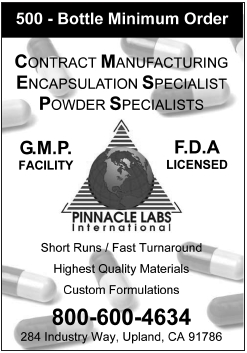 The way it works, according to Trujillo, is that EFAs like ALA and LA slow down and lessen the amount of sugar absorbed into the bloodstream after eating. “In this manner, EFAs can help balance blood sugar,” he states.
The way it works, according to Trujillo, is that EFAs like ALA and LA slow down and lessen the amount of sugar absorbed into the bloodstream after eating. “In this manner, EFAs can help balance blood sugar,” he states.
Earlier this year, ALA from chia seed (6) was tested in a small-animals study to gauge its effect on blood sugar levels. Mice were fed high-carb, high-fat diets and were supplemented with chia seeds. Those that ate the chia had improved insulin sensitivity, glucose tolerance, less inflammation and other benefits. Of note, the researchers found chia seeds “induced lipid redistribution with lipid trafficking away from the visceral fat and liver with an increased accumulation in the heart.”
A research group headed by Vladimir Vuksan, Ph.D., at the University of Toronto studied a branded Salvia hispanica L (Salba) and determined it supports healthy blood sugar levels in diabetics.
According to Fata, other components of plant-based EFAs help maintain healthy blood sugar levels. For instance, the soluble and insoluble fibers found in hemp help “maintain normal blood sugar levels,” he states.
Energy support. Grains like chia have much historical use for their role in energy and stamina support. Today, many athletes and personal trainers turn to these items as a source of energy. Joiner-Bey offers some information about how it works: “Dietary fats are major energy sources for cells. The plant omega-3 ALA is readily used as a fuel at the cell level. Because the omega-3s tend to increase metabolism, the energy generated by ALA does not lead to a concurrent accumulation of body fat mass leading to obesity.”
Trujillo makes the point that ALA and LA “improve thermogenesis for more efficient fat burning, which 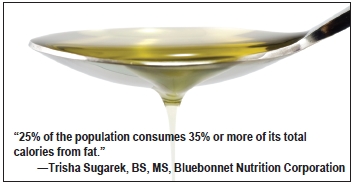 will benefit those trying to lose weight.” He states that his firm’s oil is used by cyclists, body builders, marathoners and other athletes because of its benefits for energy, recovery and athletic performance.
will benefit those trying to lose weight.” He states that his firm’s oil is used by cyclists, body builders, marathoners and other athletes because of its benefits for energy, recovery and athletic performance.
One recent study put chia to the test for endurance in athletes (7). Researchers found that when athletes exercised for more than 90 minutes, chia turned out to be a “viable option for enhancing performance for endurance events.”
Hemp, too, may help on this front. According to Fata, this grain’s large omega and amino acid content helps people feel fuller for longer and have more sustained energy. He states, “Hemp’s ratio of omega-6s to omega-3s and its amino acid profile compliments the body’s functioning encouraging a steady release of energy.”
Other links to plant-based omegas and energy are the medium-chain triglycerides, such as those found in coconut oil. The liver and skeletal muscle burn triglycerides of this length. Says Trujillo, “Research shows the MCTs may lead to an increased metabolic rate when replacing other dietary fats and this is ideally beneficial for athletes and might be useful for weight management.”
 The GLA found in evening primrose oil, says Trujillo, helps deliver oxygen to tissues, which may help support energy and endurance. He adds, “Its anti-inflammatory prostaglandin benefits can also improve recovery from exercise and in turn advance performance.” In the body, GLA is broken down to arachidonic acid. Prostaglandins from this omega-6 signal an increase in insulin-like growth factor, which increases protein synthesis and muscle healing. “This, of course, also influences the general healing process after injury,” he states.
The GLA found in evening primrose oil, says Trujillo, helps deliver oxygen to tissues, which may help support energy and endurance. He adds, “Its anti-inflammatory prostaglandin benefits can also improve recovery from exercise and in turn advance performance.” In the body, GLA is broken down to arachidonic acid. Prostaglandins from this omega-6 signal an increase in insulin-like growth factor, which increases protein synthesis and muscle healing. “This, of course, also influences the general healing process after injury,” he states.
And, rice bran oil is known to support energy because of its gamma oryzanol content, which supports pituitary gland function (and, in turn, energy and strength).
Weight management. Omega-3s can be an important part of a weight-management strategy, and the reason why, says Joiner-Bey, is that studies indicate they decrease body fat mass while increasing lean mass.
Plant-derived ALA and LA give individuals energy, says Trujillo, increase thermogenesis and improve circulation. He states, “These nutrients are absolutely necessary to turn on the fat burning genes.” Trujillo believes the only way to burn fat is to cut down on sugar consumption (since the body loves to use glucose as fuel) and increase EFA consumption (so the body will use it for energy instead).
Comments Trujillo, “When this happens the body burns fat very efficiently. Professional body builders use up to 17 tablespoons of Udo’s per day while cutting down for competitions and while they cut out the sugar and add lean protein they see the fat just melt away.”
Also supporting weight management is GLA, which, according to Fata, increases metabolism and encourages the body to use stored fat for energy. He explains that GLA “activates the metabolic process by providing the nutrients necessary to control the sodium–potassium pump in cells. If the sodium–potassium pump is not working effectively, the body will store unused energy as fat. In addition, GLA activates brown adipose tissue (BAT), which is an active tissue that burns calories for heat. When BAT is actively functioning it acts as a powerful mechanism for weight management.”
Other components of plant-based omegas help, too, like fiber. For instance, Chioffi believes chia offers a “unique mix of soluble and insoluble fibers that not only acts as a bulking agent, but it also utilizes water more effectively providing for more gentle and productive movements.”
The aforementioned effects are just some of the many health benefits of plant-derived omegas. Mosca makes the excellent point that numerous studies have supported the use of ALA for specific populations such as children (supports attention and focus), nursing/pregnant mothers (supports healthy blood pressure, mood, and eye/brain health in unborn babies) and the elderly (for brain health and anti-inflammation).
Plotting a New Route
Many manufacturers are interested in finding and marketing new sources of plant-based omegas. WholeFoods asked those interviewed for this piece to talk about some of the new, unique sources they have investigated and/or marketed.
Martin of Martek says her firm has been selling algal DHA for years, and now is working on something new: “Recently, our scientists have identified a strain of algae that is a naturally high producer of both DHA and EPA omega-3, giving us the opportunity to deliver a fish-free fish oil that is from a vegetarian and sustainable source with 500 mg of DHA + EPA.”
Algal EPA is somewhat of a new trend, which is great news considering EPA’s importance to health and wellness. According to Kenn Israel, vice president of marketing at Robinson Pharma, Santa Ana, CA, “There are almost no sources of vegetarian EPA on the market today. And, EPA is something critical for healthy heart function, brain function and a lot of anti-inflammatory effects that have been noted in many, many clinical studies and observational reports on humans.”
Also noting this trend is Adam Ismail, executive director of the Global Organization for EPA and DHA Omega-3 (GOED), Salt Lake City, UT, “There are small volumes of algal EPA available today that are being used in product development right now, but I would guess that full commercial production will be here in about six months.”
Israel also raises the point that when investigating new sources of plant-based omegas, some mainstream companies are not looking at natural. DuPont, for instance, came out with a genetically engineered yeast source of EPA, he says. But luckily, natural is still a priority at other firms. Earlier this year, Aurora Algae, Hayward, CA, launched an EPA omega-3 oil derived from an Australian algae. The algae is sustainably grown and harvested. States the firm on its Web site, “Aurora uses novel and proprietary open pond technology to grow its algae on a scalable platform to meet the rapidly growing demand. With algae’s quick and constant growth cycle, we are able to scale our crops to synchronize grow cycles to customer demand.”
Production on natural algal EPA may not be straightforward at first as identifying a strain that produces EPA and developing a method to produce it in large quantities can be tricky. But once full-scale production is underway, algal EPA manufacturing should be fairly easy to maintain, says Ismail. He states, “With single-cell organisms a lot of engineering goes into the organism and maximizing its productivity…Look at a company like Martek. Their operations run smoothly at full scale because of their experience.”
States Israel, “As the world’s population grows and as awareness of the critical importance of humans consuming EPA and DHA becomes larger, it’s not going to be enough to have just traditional fish sourced EPA and DHA. There’s a rapidly approaching collision point between the demand and the supply curve...we’re going to need to develop other sources.”
Algal sources, he believes, are one important resource in meeting this challenge. But also set to come into the omega fast lane are new plant-based sources of stearidonic acid, says Israel, which may have similar health benefits to EPA. Echium seed is one such source, and Israel thinks it will be “red hot” in the coming years. It appears to be readily convertible to EPA and DHA in humans.
Fork in the Road
Many plant-based omegas are available in softgels, as oils, as food ingredients and as whole/milled seeds. There are several diverging opinions about which delivery form is best and why.
For instance, Mosca believes consuming the seeds themselves is best. “Always preferable is a nutrient in its wholly natural state,” he states. Plus, they can add flavor and texture to foods.
Others may prefer the versatility of oil, which, in many cases, can be eaten right from the spoon or in certain recipes (check with your manufacturers for how). Fata feels that getting enough omegas through the pill route could mean downing a handful of softgels, which may not appeal to all shoppers. “Liquid forms, like oil, make consuming the recommended daily intake efficient and easier than capsules,” he states.
Trujillo agrees noting, “Depending on the size of the softgel, it will require 14/1,000 mg or 28/500mg softgels to equal a tablespoon of oil.”
The downside is that oils need to be refrigerated after opening and some people dislike the mouth-feel of oil.
Still, many shoppers automatically go to softgels for their portability and convenience, and because they’d rather swallow pills than a spoonful of oil. Says Clow, “As a supplement, softgels are a very convenient way for consumers to get omegas. They provide a protective barrier to prevent the oils from oxidizing, allowing for a longer shelf life.”
Being that it can be sold to supplement makers as an oil or a powder, algal DHA and EPA offers versatility for delivery in supplements, foods and drinks. Even in these forms, Martin says algal DHA and EPA offer the same bioavailability as the marine variety, meaning that shoppers have lots of great choices. “Some consumers prefer foods & beverages that are rich in DHA and EPA versus taking a supplement. While others want to be sure that they’re getting the recommended daily intake of DHA and EPA, it’s easy for them to take a daily supplement. The key is identifying the audience and then delivering the best source and form of omega-3 that they’ll use,” Martin says.
Another fairly new form is pre-emulsified oils with a smoothie-like consistency. Joiner-Bey believes this is the most advantageous form because it offers maximum absorption, no aftertaste or regurgitation, a pleasing taste and texture and is easy to give to kids. The cons are that it must be stored in the fridge, so it can’t be taken on the road.
In the end, make sure that whichever supplements you choose for your shelves are of a high quality. Fata says the most important things to look for are that they are “sourced from non-GMO plants, offered in containers that protect the omegas, and free from additives or colorings.”
Definitely make it a point to learn about your manufacturers’ production processes because degradation can occur if extraction and bottling are done carelessly. For oils, some manufacturers also suggest cold pressing, and others recommend bottling the product as quickly as possible in packaging that guards it from light and oxygen.
Chioffi says Gaia Herbs processes its chia seeds via supercritical extraction. This method uses carbon dioxide as a solvent. “By using Supercritical CO2 we can make an extract that collects the most amount of omega-3 fatty acids using an environmentally safe procedure that guarantee’s safety to our customers as well as our environment,” he says, noting his company also has a patented O2 B Peroxidation Blocker. This system uses antioxidants like astaxanthin and mixed tocopherols to prevent the oils from degrading.
And, Agora Food Sciences believes its processing of Salvia hispanica L improves chia’s bioavailability, safety and absorption. Seeds go through a “bio-5 step process” and undergo a “reduced pathogen process.” This technique, says the company, ensures the seeds are 99% free of microbiological activity. And, its small particle technology ensures excellent bioavailability. In addition, “As part of the ‘Bio-5 step process’ seeds also go through a denaturing of enzyme bonds that normally make chia, flax and other oil seeds mucilaginous,” says the firm, noting, “This patented and patent-pending process allows the first ever full omega-3 content to be water suspendable.” Agora Food Sciences also has several formulas that carry a “heart healthy” label, states the company. WF
References
1. L.T. Bloedon and P.O. Szapary, “Flaxseed and Cardiovascular Risk,” Nutr. Rev. 62, 18–27 (2004).
2. D.C. Nordstrom, et al., “Alpha-Linolenic Acid in the Treatment of Rheumatoid Arthritis. A Double-Blind, Placebo-Controlled And Randomized Study: Flaxseed Vs. Safflower Seed,” Rheumatol. Int. 14, 231–234 (1995).
3. K. Prasad, “Dietary Flax Seed in Prevention of Hypercholesterolemic Atherosclerosis,” Atherosclerosis 132, 69–76 (1997).
4. University of Maryland Medical Center, “Gamma Linolenic Acid,” www.umm.edu/altmed/articles/gamma-linolenic-000305.htm, accessed June 15, 2011.
5. “Flaxseed Leads to Lower Cholesterol in Men,” WholeFoods Magazine, June 2010.
6. H. Poudyal, et al., “Lipid Redistribution by a-Linolenic Acid-Rich Chia Seed Inhibits Stearoyl-Coa Desaturase-1 And Induces Cardiac and Hepatic Protection In Diet-Induced Obese Rats,” J. Nutr. Biochem. 2011 Mar 22. [Epub ahead of print]
7. T.G. Illian, J.C. Casey and P.A. Bishop, “Omega 3 Chia Seed Loading as a Means of Carbohydrate Loading,” J. Strength Cond. Res. 25(1), 61–65 (2011).
Published in WholeFoods Magazine, August 2011










